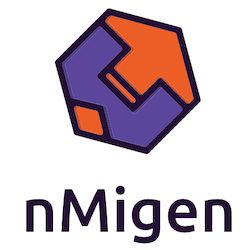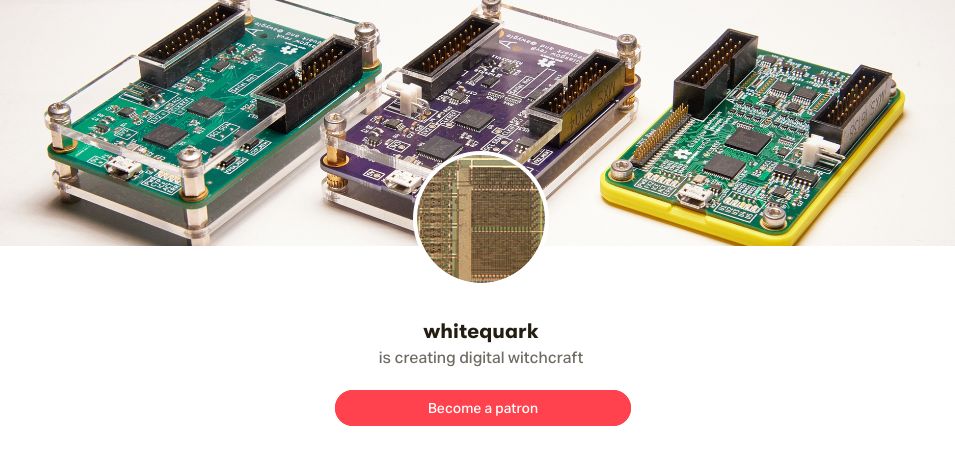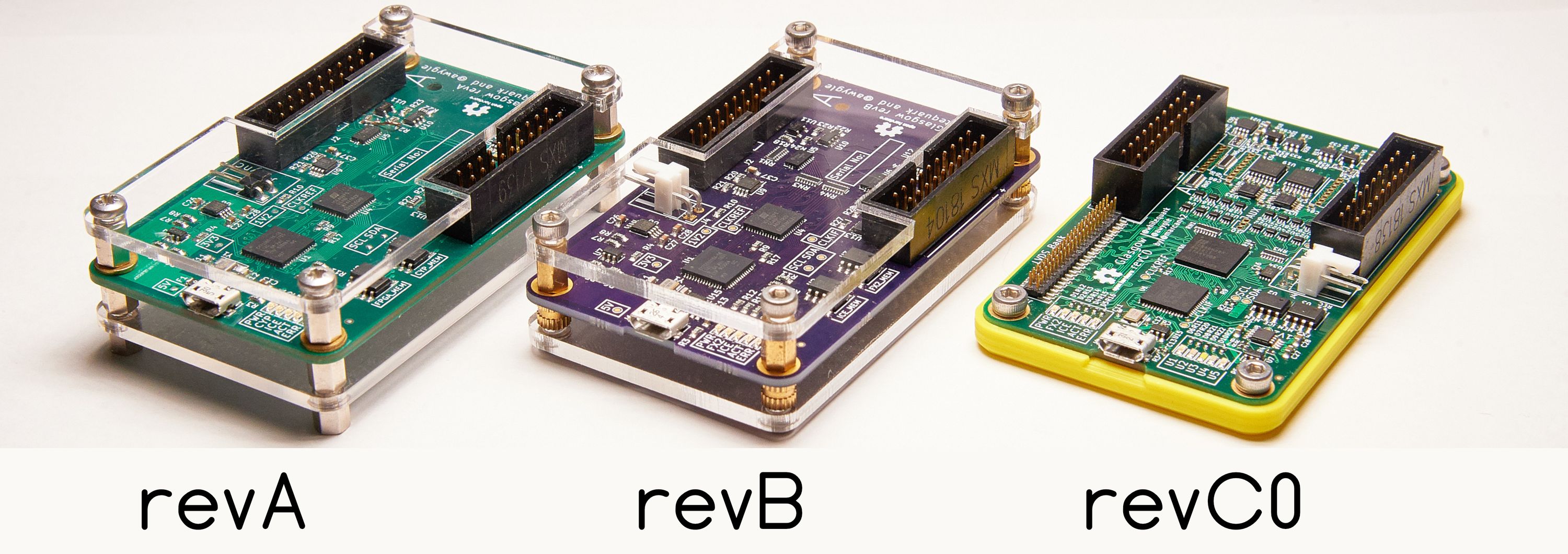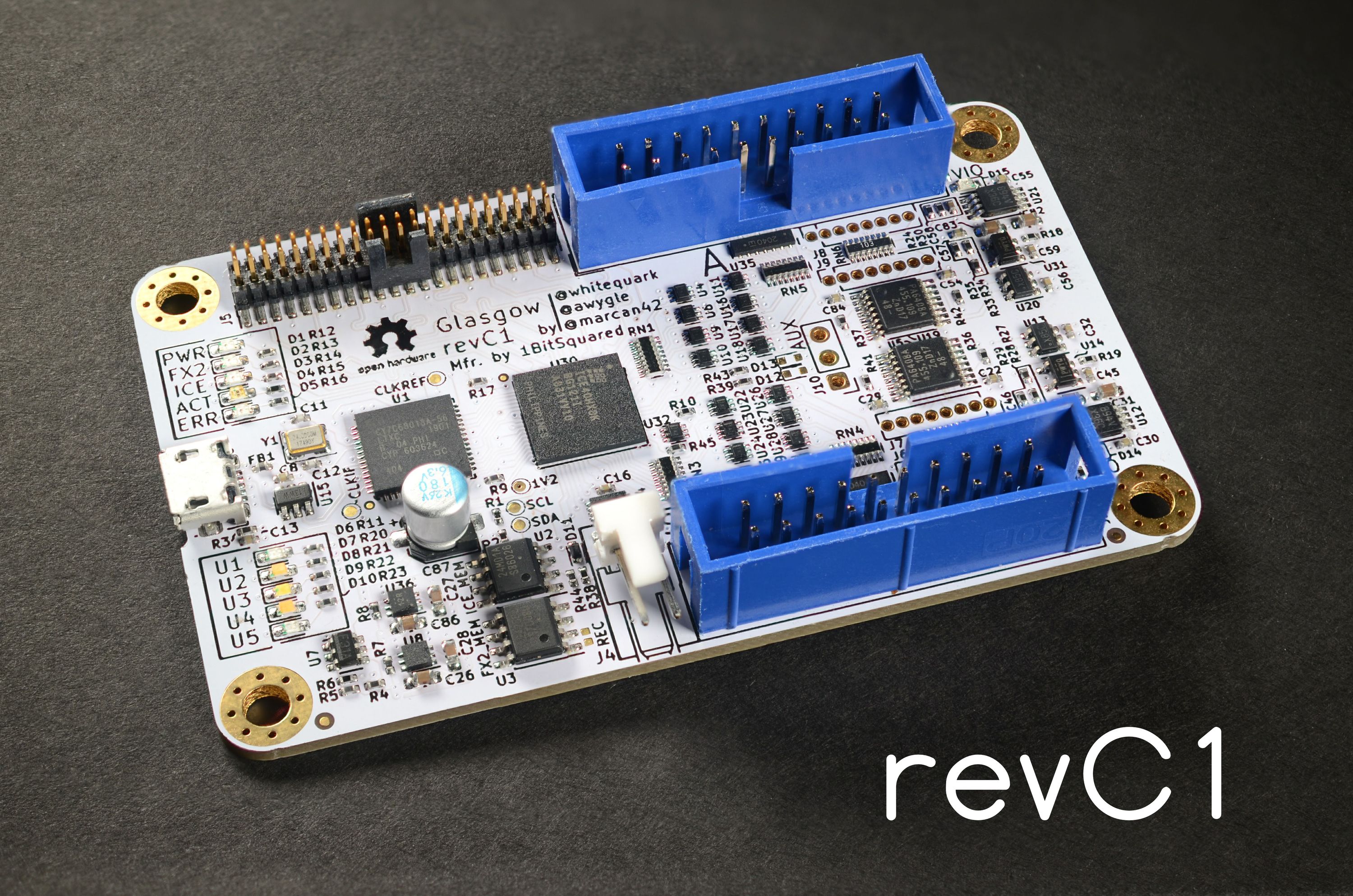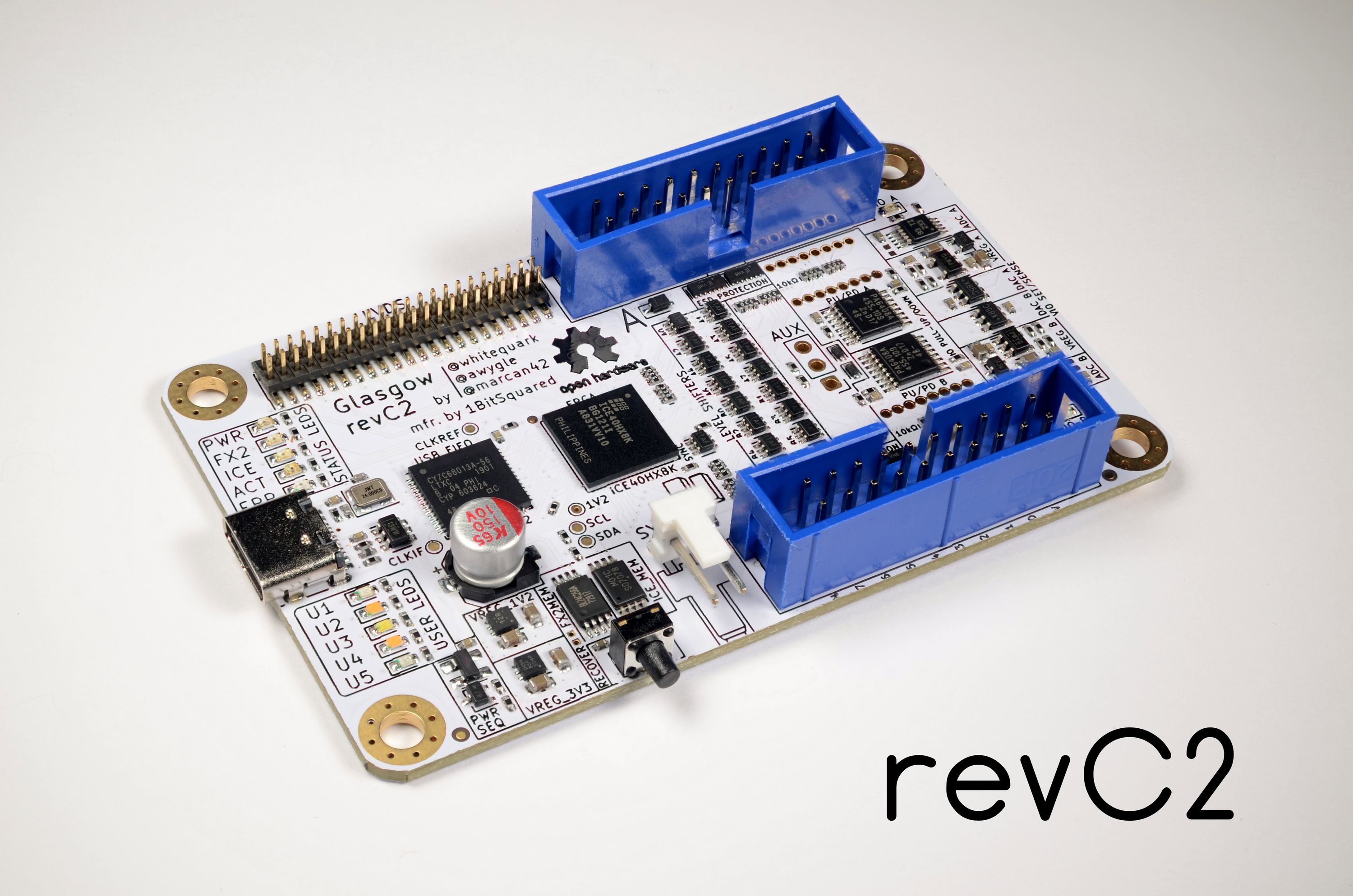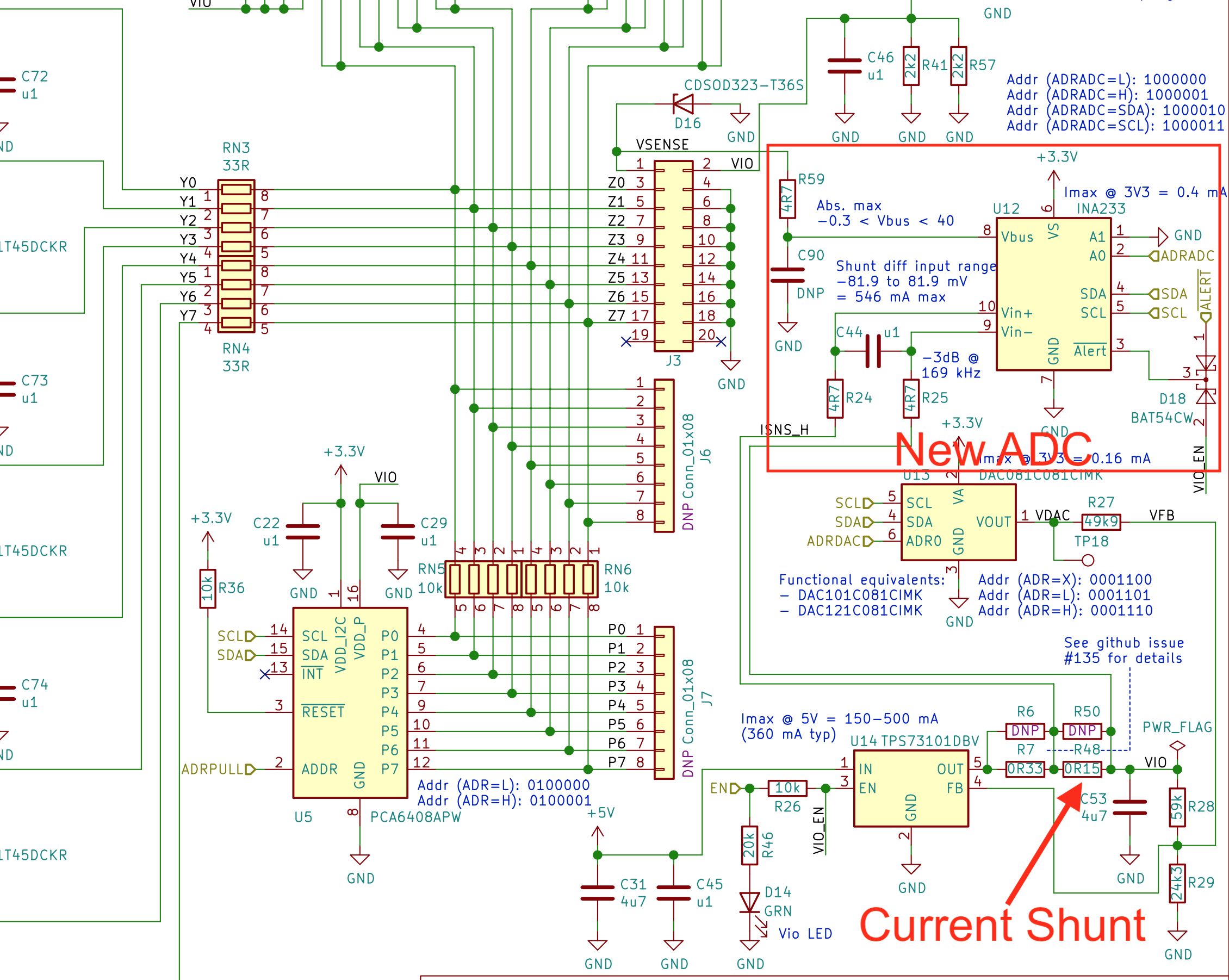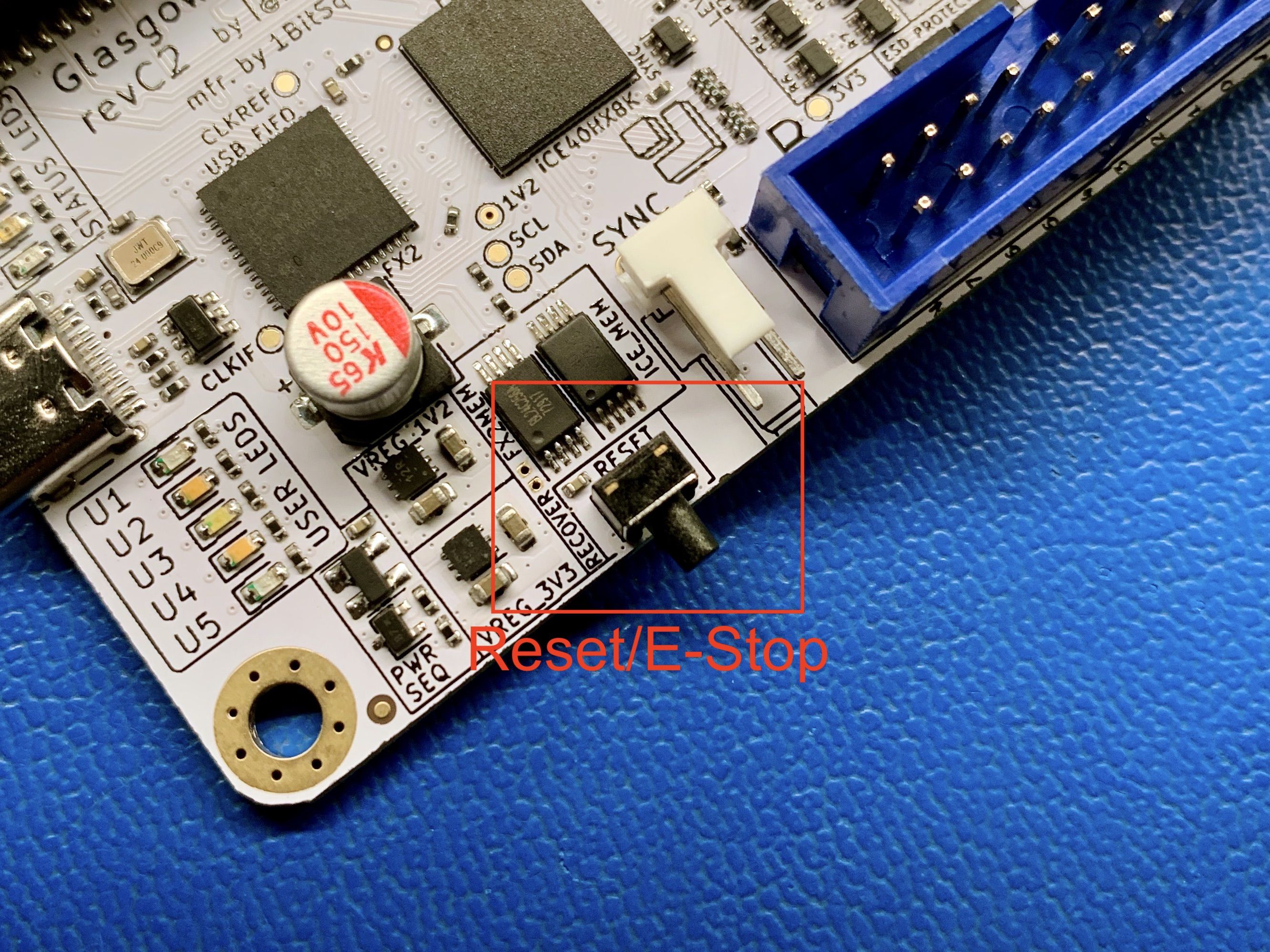Project update 2 of 14
We're fully funded! (and some development progress)
by Piotr Esden-TempskiHey everyone!
It has been quite a ride the last few weeks! We were fully funded in the first 30 minutes and cracked 400% in 24 hours. Thank you! You all ROCK!
We did not expect that and we are super happy to see you are as excited about Glasgow as we are.
We’re looking forward to ordering parts, finalizing the last touches on the Glasgow revC, and starting manufacturing as soon as we can. But for now, we still have some more days to go. Make sure to let all your friends know about the campaign to spread the word and get Glasgow onto everyone’s lab desk. I think we can all agree a universal and flexible protocol adapter is a good tool to have in one’s toolbox.
Credits & Shout-Outs
As you may know, the Glasgow Digital Interface Explorer project was started by Whitequark. She is the maintainer, coordinator, and main developer of Glasgow. Since the initial hardware version designed by Whitequark, several people have joined in and put a lot of effort into the hardware and applets. However, Whitequark is still the primary developer. Glasgow is also the inspiration for nMigen. Whitequark realized it was not possible to implement certain things in Glasgow’s predecessor, migen (a.k.a. oMigen). And the list keeps going, branching into more projects.
- nMigen: A refreshed Python toolbox for building complex digital hardware.
- YoWASP: A portable WebAssembly powered version of Yosys, nextpnr and more, to make deployment easier.
- CCXRTL: C++ Yosys simulation backend.
Whitequark asked me (Piotr) to take on the Glasgow project and take care of hardware batch production, resulting in this Crowd Supply campaign. So now I’m required to take care of all the logistics including future support and hardware production hardware.
If you want to support further development of the software for Glasgow and other supporting projects, the best way to do that is to contribute to Whitequark’s Patreon.
Hardware Revision History
As promised in our launch update, we wanted to share some of the history of Glasgow with you.
You can see in our campaign we either use revC or revC2. You can think of revC as the model number of Glasgow. The first two models, revA and revB, still exist in the repository but had some fundamental issues making them essentially historical notes. RevC is the first model making it into regular production. We will be working on future models revD and revE, which will have more capabilities but will also cost more. These new models will not replace the revC, but will be available in parallel in the future, so you can choose the hardware that matches your needs. RevD and revE have not been designed yet, it will be a while before they are available. (probably a year or two from now)
As for the number revC0, revC1, revC2, and so on, these are hardware revisions. RevC1 is already considered "stable" and several individuals and groups made a few units or small batches of them. They work great, so if you have one, you can keep using it. Glasgow’s software framework will keep supporting the previous models and revisions of the hardware indefinitely so you will not be left behind.
With revC2 we made a lot of DFM (Design For Manufacture) improvements, such as:
- Replaced 8x resistor packs with 4x resistor packs. The 4x variants are much more common and easier to source.
- Updated footprints to better match JEDEC PCB manufacturing guidelines. Among other things, this resulted in some good looking rounded rectangle SMD pads.
- Replaced the 16x ESD protection diode pack with two smaller ones, as the smaller ones are more commonly available and easier to solder. We had issues soldering the larger package because it had ground pads that resulted in shorts and often needed rework.
- Simplified the power sequencing circuitry. We are using a simpler power supply monitoring part, some diode steering, and some RC delays to sequence the powerup of the Glasgow. This shaved off some money from the BOM (Bill Of Materials) and resulted in easier to obtain, more generic part selection.
Piotr also re-did the silkscreen on the Glasgow. So it is now a legend, describing the different functional circuit blocks of the Glasgow, instead of indicating the part ID of each component. You still should be able to easily find the parts when you want to debug or repair something by using the published KiCad files. But now, when you show your Glasgow to your friends or colleges, it will be a nice reference, so you can point to all the different and wonderful things it can do.
While we were already at it, electronic_eel replaced the ADC chip we used for target voltage monitoring with a new and more capable part. Now the Glasgow can not only monitor the voltage but also the current used by the I/O bank. The chip has settable alarms that can generate an interrupt when the voltage or current exceed set limits. This will be a great addition to the capabilities of Glasgow.
Last but not least, we also added a Reset/E-Stop button. Whitequark had the idea that we should be able to quickly reset the Glasgow to get it back to a safe state. Until now you either had to run glasgow safe, or unplug the USB cable. Now you just need to "squeeze" the Glasgow to hit the Reset/E-Stop button and it will disable all power to the I/O and reset the device into a safe state. This is a hardware switch too, so even if your applet happens to be buggy in some way, this switch will get you back to safety. :)
Before we start production, we will do one last revision of the hardware, revC3. In the revC2 prototypes we found out we have a minor i2c conflict that can only partially be worked around in software. So we will likely have to change the address strapping resistors for the DACs (Digital to Analog Converters) that control the I/O bank voltages. This is a very simple change we can test on the existing prototype hardware with some bodge wires, so we are very confident that we can get it resolved quickly without impacting our production time-line.
Twitch Streams
If you are interested in more Glasgow development details, I (Piotr) am streaming on Twitch every Tuesday. The streams start around 1-2pm Pacific time and run for about 2-3 hours. If you follow me on Twitch you will be notified as soon as I go live. During the Glasgow Campaign, I will keep working on things related to Glasgow, but I also work on other things too. So if you are interested in some Electronics Let’s Play content check it out.
Additionally Attie is also streaming Glasgow-related content every Wednesday, and DX-MON streams every Saturday and uses Glasgow to debug and test her projects. Give them both a follow.
That’s It For This Update
I hope you enjoyed the rundown of the hardware changes.
If you have any more questions send us a message and/or join our IRC Channel on Freenode or the #glasgow channel on the 1BitSquared Discord server and ask away.
Again thank you everyone who decided to pre-order a Glasgow. We can’t wait to get it into your hands and see what you do with it.
Cheers,
The Glasgow team








